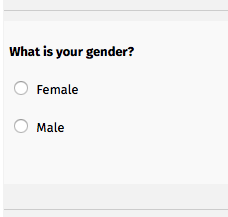
When we go to a new doctor’s office or meet someone new, most people identify my younger son as female. He has let his straight, black hair grow longer, reaching a bit past his shoulders now. He is also small for his age, quiet (in public), and generally shy, and his name (being Chinese) does not suggest a gender for most people in the United States. These markers, it seems, lead people to mislabel him.
While he seems unfazed by this, others are not. When people discover their error, they suddenly become extremely apologetic and embarrassed. But why? It is an understandable mistake, and neither he nor my wife or I take offense at the mistake. Of course, they do not know that it is not a big deal to him, so the common assumption/fear may be that someone will be hurt or angry over the error, but that does not seem to be the whole situation.
We all assume that we can identify a person’s gender. The 1990’s Saturday Night Live skit “It’s Pat” (see one example here) featured a gender ambiguous, nerdy character and highlighted how uncomfortable others are if they cannot identify someone’s gender. Ambiguity about such an “obvious” binary is unsettling for many. While we assume that the difference of gender is naturally significant and readily identifiable, the assumption that everyone easily falls into one of two genders is inaccurate, as the recent posts on social media about the different chromosomal combinations of X and Y highlights. We have similar issues about ethnicity and race, assuming that we should be able to visually identify someone’s heritage, which creates problems for multi-ethnic people and makes the discovery that someone is “passing” as a member of a race/ethnic group when their ancestry does not conform to the social construction of that group into a newsworthy event.
When people cannot read someone’s appearance “accurately,” the failure challenges the assumption that these identity markings are natural and obvious, contributing to people’s discomfort. These challenges highlight how presumably natural ways of dividing or organizing humanity are anything but natural and automatic. We are conditioned by those around us to read these identity markings as central. Our language reinforces the significance, as the pronoun structure of English (as well as many other languages) makes it difficult to talk about someone without knowing their gender. Identifying my child as my son in the first sentence of this post signals his gender, and the rest of the post reinforces that signal, using the male pronoun. The recent commentary on the White House photos of a room of white men making decisions about healthcare for women also suggests that gender and race are significant ways of identifying and organizing people.
Many people also have a hard time pronouncing my younger son’s name, but their embarrassment at that error is inconsequential compared to the apologies and embarrassment of misidentifying his gender. These apologies, thus, reinforce the significance of the gender identification, because it makes the error more apparent and consequential, essentially saying that if you are not offended by this, you should be. The natural appearance of this constructed binary contributes to people’s embarrassment if they mislabel someone, but that embarrassment demonstrates the significance and naturalized position of gender identifications. I do not intend to diminish the offense that some experience when they are mislabeled, and even more so, I recognize the significant challenges and, too often, social rejection people experience if they do not fit the gender binary. Those experiences, including the social rejection, develop out of the construction of gender identification as significant and natural, something that not only our language but also the tendency to apologize and be embarrassed when getting it wrong reinforces.
